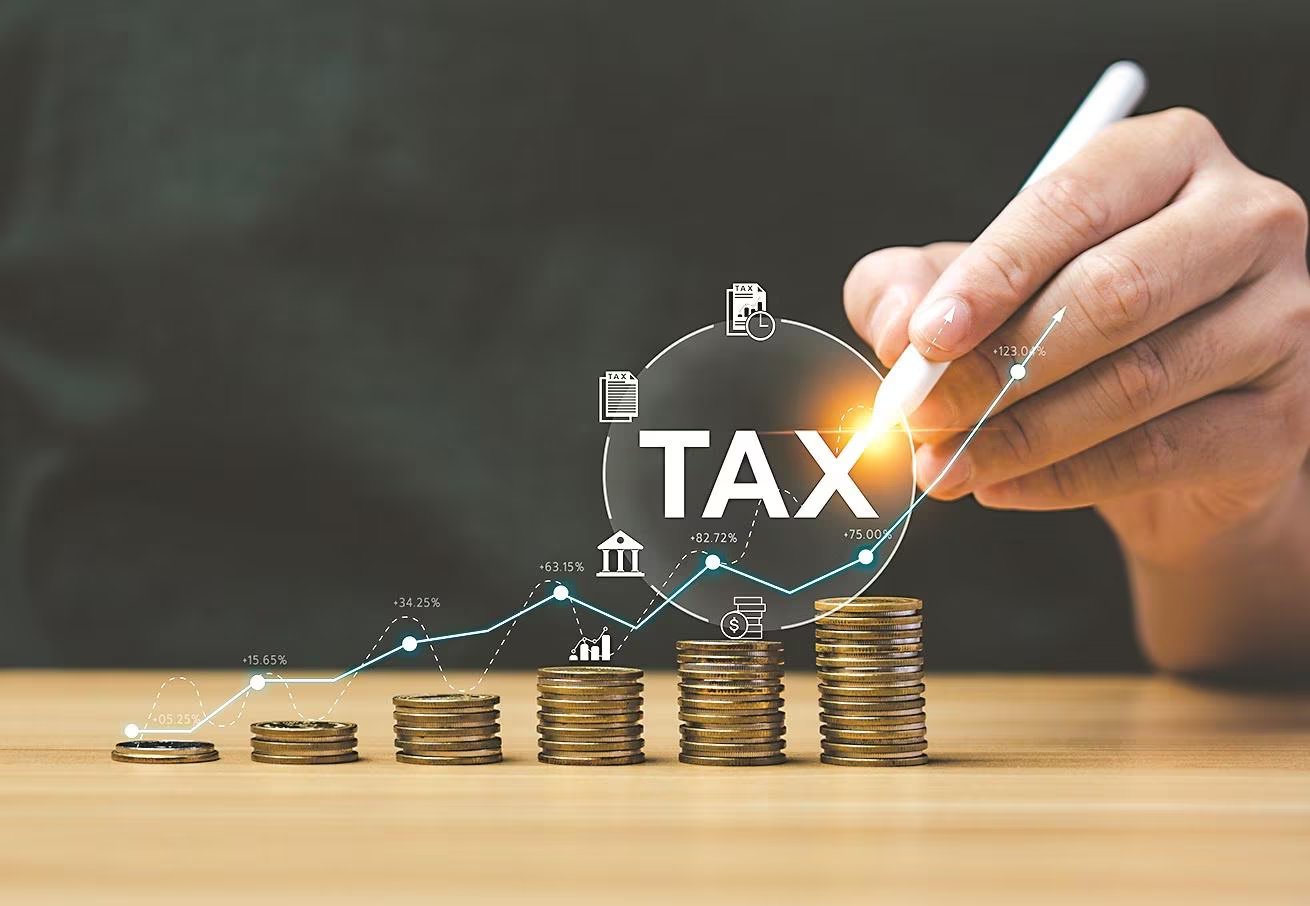Courses


 Compare
Compare
Development Experience of India – A Comparison with Neighbours is a chapter in Class 12 Economics that explores India's economic development in comparison to its neighboring countries. It covers topics such as: Economic Indicators: Comparisons of key economic indicators, such as GDP, per capita income, poverty rates, and industrialization levels, between India and its neighbors. Development Strategies: A comparison of the development strategies adopted by India and its neighbors, including their focus on agriculture, industry, and services. Social Development: A comparison of social development indicators, such as literacy rates, health outcomes, and gender equality, between India and its neighbors. Challenges and Opportunities: An examination of the common challenges and opportunities faced by India and its neighbors in their development journeys. This chapter aims to provide students with a comparative perspective on India's economic development and to help them understand the factors that have contributed to its successes and challenges. ভারতের উন্নয়ন অভিজ্ঞতা-প্রতিবেশীদের সঙ্গে তুলনা হল দ্বাদশ শ্রেণির অর্থনীতির একটি অধ্যায় যা প্রতিবেশী দেশগুলির তুলনায় ভারতের অর্থনৈতিক উন্নয়নের অন্বেষণ করে। এতে অন্তর্ভুক্ত বিষয়গুলি যেমনঃ অর্থনৈতিক সূচকঃ ভারত ও তার প্রতিবেশীদের মধ্যে জিডিপি, মাথাপিছু আয়, দারিদ্র্যের হার এবং শিল্পায়নের স্তরের মতো মূল অর্থনৈতিক সূচকগুলির তুলনা। উন্নয়ন কৌশলঃ কৃষি, শিল্প এবং পরিষেবাগুলিতে তাদের ফোকাস সহ ভারত এবং তার প্রতিবেশীদের দ্বারা গৃহীত উন্নয়ন কৌশলগুলির তুলনা। সামাজিক উন্নয়নঃ ভারত ও তার প্রতিবেশীদের মধ্যে সাক্ষরতার হার, স্বাস্থ্যের ফলাফল এবং লিঙ্গ সমতার মতো সামাজিক উন্নয়ন সূচকগুলির তুলনা। চ্যালেঞ্জ এবং সুযোগঃ ভারত এবং তার প্রতিবেশীরা তাদের উন্নয়ন যাত্রায় যে সাধারণ চ্যালেঞ্জ এবং সুযোগের মুখোমুখি হয় তার একটি পরীক্ষা। এই অধ্যায়ের লক্ষ্য হল শিক্ষার্থীদের ভারতের অর্থনৈতিক উন্নয়নের বিষয়ে তুলনামূলক দৃষ্টিভঙ্গি প্রদান করা এবং এর সাফল্য ও চ্যালেঞ্জগুলির ক্ষেত্রে যে কারণগুলি অবদান রেখেছে তা বুঝতে তাদের সহায়তা করা।
₹599
0 Lessons
Hours

 Compare
Compare
The chapter "Current Challenges facing Indian Economy" in Class 12 Economics provides a comprehensive overview of the key economic issues confronting India at present. It delves into a range of challenges, including: Unemployment: The rising unemployment rate, especially among youth, and its impact on social and economic stability. Inequality: The growing gap between the rich and poor, and its implications for social justice and economic development. Inflation: The persistent rise in prices, affecting the purchasing power of consumers and eroding living standards. External Debt: The challenges associated with managing India's external debt and ensuring its sustainability. Climate Change: The economic consequences of climate change, including its impact on agriculture, infrastructure, and natural resources. Global Economic Uncertainty: The challenges posed by global economic fluctuations, such as trade wars and pandemics, on India's economy. This chapter aims to equip students with a deep understanding of the current economic landscape in India and the multifaceted challenges it faces. By studying these issues, students can develop critical thinking skills and contribute to finding solutions to these pressing problems. দ্বাদশ শ্রেণীর অর্থনীতিতে "ভারতীয় অর্থনীতির বর্তমান চ্যালেঞ্জ" অধ্যায়টি বর্তমানে ভারতের প্রধান অর্থনৈতিক সমস্যাগুলির একটি বিস্তৃত বিবরণ প্রদান করে। এটি বিভিন্ন ধরনের চ্যালেঞ্জের মধ্যে দিয়ে যায়, যার মধ্যে রয়েছেঃ বেকারত্বঃ ক্রমবর্ধমান বেকারত্বের হার, বিশেষত যুবকদের মধ্যে, এবং সামাজিক ও অর্থনৈতিক স্থিতিশীলতার উপর এর প্রভাব। অসমতাঃ ধনী ও দরিদ্রের মধ্যে ক্রমবর্ধমান ব্যবধান এবং সামাজিক ন্যায়বিচার ও অর্থনৈতিক উন্নয়নের জন্য এর প্রভাব। মুদ্রাস্ফিতিঃ দামের ক্রমাগত বৃদ্ধি, ভোক্তাদের ক্রয় ক্ষমতাকে প্রভাবিত করে এবং জীবনযাত্রার মান হ্রাস পায়। বাহ্যিক ঋণঃ ভারতের বাহ্যিক ঋণ পরিচালনা এবং এর স্থায়িত্ব নিশ্চিত করার সঙ্গে যুক্ত চ্যালেঞ্জ। জলবায়ু পরিবর্তনঃ কৃষি, পরিকাঠামো এবং প্রাকৃতিক সম্পদের উপর এর প্রভাব সহ জলবায়ু পরিবর্তনের অর্থনৈতিক পরিণতি। বৈশ্বিক অর্থনৈতিক অনিশ্চয়তাঃ ভারতের অর্থনীতিতে বাণিজ্য যুদ্ধ ও মহামারীর মতো বৈশ্বিক অর্থনৈতিক ওঠানামা দ্বারা উদ্ভূত চ্যালেঞ্জ। এই অধ্যায়ের লক্ষ্য হল ভারতের বর্তমান অর্থনৈতিক প্রেক্ষাপট এবং এর মুখোমুখি বহুমুখী চ্যালেঞ্জগুলি সম্পর্কে গভীর বোঝার সাথে শিক্ষার্থীদের সজ্জিত করা। এই বিষয়গুলি অধ্যয়ন করে, শিক্ষার্থীরা সমালোচনামূলক চিন্তাভাবনার দক্ষতা বিকাশ করতে পারে এবং এই গুরুত্বপূর্ণ সমস্যাগুলির সমাধান খুঁজে পেতে অবদান রাখতে পারে।
0 Lessons
Hours

 Compare
Compare
Development Experience (1947-90) and Economic Reforms since 1991 is a chapter in Class 12 Economics that explores India's economic development journey since independence. It covers topics such as: Development Experience (1947-90): Economic Planning: India's approach to economic development through five-year plans, emphasizing public sector control and import substitution. Achievements and Challenges: The successes and failures of India's development strategy during this period, including poverty reduction, industrialization, and self-sufficiency. Green Revolution: The agricultural reforms that led to increased food production and self-sufficiency. Economic Stagnation: The challenges faced by the Indian economy in the 1970s and 1980s, including slow growth, inflation, and balance of payments crises. Economic Reforms since 1991: Liberalization: The shift towards a market-oriented economy, including deregulation, privatization, and globalization. Structural Adjustment: The reforms aimed at improving the efficiency of the Indian economy, such as reducing subsidies, reforming the financial sector, and promoting foreign investment. Achievements and Challenges: The successes and challenges of India's economic reforms since 1991, including growth, poverty reduction, and social development. This chapter aims to provide students with a comprehensive understanding of India's economic development journey and the factors that have influenced its successes and challenges. উন্নয়ন অভিজ্ঞতা (1947-90) এবং 1991 সাল থেকে অর্থনৈতিক সংস্কার হল দ্বাদশ শ্রেণির অর্থনীতির একটি অধ্যায় যা স্বাধীনতার পর থেকে ভারতের অর্থনৈতিক উন্নয়নের যাত্রা অন্বেষণ করে। এতে অন্তর্ভুক্ত বিষয়গুলি যেমনঃ উন্নয়ন অভিজ্ঞতা (1947-90) অর্থনৈতিক পরিকল্পনাঃ পঞ্চবার্ষিকী পরিকল্পনার মাধ্যমে অর্থনৈতিক উন্নয়নের জন্য ভারতের দৃষ্টিভঙ্গি, পাবলিক সেক্টর নিয়ন্ত্রণ এবং আমদানি প্রতিস্থাপনের উপর জোর দেওয়া। অর্জন ও চ্যালেঞ্জঃ দারিদ্র্য হ্রাস, শিল্পায়ন এবং স্বয়ংসম্পূর্ণতা সহ এই সময়কালে ভারতের উন্নয়ন কৌশলের সাফল্য ও ব্যর্থতা। সবুজ বিপ্লবঃ কৃষি সংস্কার যা খাদ্য উৎপাদন এবং স্বয়ংসম্পূর্ণতা বৃদ্ধি করে। অর্থনৈতিক স্থবিরতাঃ 1970 এবং 1980-এর দশকে ভারতীয় অর্থনীতি যে চ্যালেঞ্জগুলির মুখোমুখি হয়েছিল, যার মধ্যে রয়েছে ধীর প্রবৃদ্ধি, মুদ্রাস্ফীতি এবং অর্থপ্রদানের ভারসাম্য সংকট। 1991 সাল থেকে অর্থনৈতিক সংস্কারঃ উদারীকরণঃ নিয়ন্ত্রণমুক্তকরণ, বেসরকারিকরণ এবং বিশ্বায়ন সহ বাজারমুখী অর্থনীতির দিকে স্থানান্তর। কাঠামোগত সমন্বয়ঃ ভর্তুকি হ্রাস, আর্থিক ক্ষেত্রের সংস্কার এবং বিদেশী বিনিয়োগের প্রচারের মতো ভারতীয় অর্থনীতির দক্ষতা উন্নত করার লক্ষ্যে সংস্কারগুলি করা হয়েছিল। অর্জন ও চ্যালেঞ্জঃ 1991 সাল থেকে ভারতের অর্থনৈতিক সংস্কারের সাফল্য ও চ্যালেঞ্জ, যার মধ্যে রয়েছে বৃদ্ধি, দারিদ্র্য হ্রাস এবং সামাজিক উন্নয়ন। এই অধ্যায়ের লক্ষ্য হল শিক্ষার্থীদের ভারতের অর্থনৈতিক উন্নয়ন যাত্রা এবং এর সাফল্য ও চ্যালেঞ্জগুলিকে প্রভাবিত করেছে এমন কারণগুলি সম্পর্কে একটি বিস্তৃত ধারণা প্রদান করা।
0 Lessons
Hours

 Compare
Compare
Balance of Payments is a chapter in Class 12 Economics that explores the economic transactions between a country and the rest of the world. It covers topics such as: Current Account: The balance of trade in goods and services, as well as transfers of income and unilateral transfers. Capital Account: The balance of capital inflows and outflows, including investments, loans, and financial assets. Autonomous Transactions: Transactions that are independent of the balance of payments, such as foreign direct investment and remittances. Accommodating Transactions: Transactions that are necessary to maintain balance in the balance of payments, such as changes in foreign exchange reserves. Exchange Rate: The value of one currency in terms of another currency. Devaluation and Revaluation: The deliberate change in the value of a currency. This chapter aims to provide students with a comprehensive understanding of the balance of payments and its implications for a country's economic development. অর্থপ্রদানের ভারসাম্য হল দ্বাদশ শ্রেণির অর্থনীতির একটি অধ্যায় যা একটি দেশ এবং বাকি বিশ্বের মধ্যে অর্থনৈতিক লেনদেনের অন্বেষণ করে। এতে অন্তর্ভুক্ত বিষয়গুলি যেমনঃ চলতি হিসাবঃ পণ্য ও পরিষেবার বাণিজ্যের ভারসাম্য, পাশাপাশি আয় স্থানান্তর এবং একতরফা স্থানান্তর। মূলধন অ্যাকাউন্টঃ বিনিয়োগ, ঋণ এবং আর্থিক সম্পদ সহ মূলধন প্রবাহ এবং বহির্গমনের ভারসাম্য। স্বায়ত্তশাসিত লেনদেনঃ এমন লেনদেন যা অর্থ প্রদানের ভারসাম্য থেকে স্বাধীন, যেমন প্রত্যক্ষ বিদেশী বিনিয়োগ এবং রেমিটেন্স। সামঞ্জস্যপূর্ণ লেনদেনঃ অর্থপ্রদানের ভারসাম্য বজায় রাখার জন্য প্রয়োজনীয় লেনদেন, যেমন বৈদেশিক মুদ্রার সঞ্চয়ের পরিবর্তন। বিনিময় হারঃ একটি মুদ্রার মূল্য অন্য মুদ্রার সাপেক্ষে। মূল্যহ্রাস এবং পুনর্মূল্যায়নঃ একটি মুদ্রার মূল্যে ইচ্ছাকৃত পরিবর্তন। এই অধ্যায়ের লক্ষ্য হল শিক্ষার্থীদের অর্থপ্রদানের ভারসাম্য এবং একটি দেশের অর্থনৈতিক উন্নয়নের জন্য এর প্রভাব সম্পর্কে একটি বিস্তৃত ধারণা প্রদান করা।
0 Lessons
Hours

 Compare
Compare
Government Budget and the Economy is a chapter in Class 12 Economics that explores the role of government budgets in influencing the economy. It covers topics such as: Government Budget: The components of a government budget, including revenue and expenditure. Fiscal Deficit: The difference between government expenditure and government revenue. Primary Deficit: The fiscal deficit excluding interest payments on government debt. Fiscal Policy: The use of government spending and taxation to influence the level of economic activity. Deficit Financing: The methods through which governments finance their deficits, such as borrowing and printing money. Debt Management: The strategies governments use to manage their public debt. This chapter aims to provide students with a comprehensive understanding of the relationship between government budgets and the economy, and the tools that governments can use to manage their finances. সরকারি বাজেট ও অর্থনীতি এটি দ্বাদশ শ্রেণির অর্থনীতির একটি অধ্যায় যা অর্থনীতিকে প্রভাবিত করতে সরকারী বাজেটের ভূমিকা অন্বেষণ করে। এতে অন্তর্ভুক্ত বিষয়গুলি যেমনঃ সরকারি বাজেটঃ রাজস্ব ও ব্যয় সহ সরকারি বাজেটের উপাদান। রাজস্ব ঘাটতিঃ সরকারি ব্যয় এবং সরকারি রাজস্বের মধ্যে পার্থক্য। প্রাথমিক ঘাটতিঃ সরকারি ঋণের সুদের পরিশোধ বাদ দিয়ে রাজস্ব ঘাটতি। রাজস্ব নীতিঃ অর্থনৈতিক ক্রিয়াকলাপের স্তরকে প্রভাবিত করতে সরকারী ব্যয় এবং করের ব্যবহার। ঘাটতি অর্থায়নঃ যে পদ্ধতিগুলির মাধ্যমে সরকারগুলি তাদের ঘাটতির অর্থায়ন করে, যেমন ঋণ নেওয়া এবং অর্থ মুদ্রণ করা। ঋণ ব্যবস্থাপনাঃ সরকার তাদের সরকারি ঋণ পরিচালনার জন্য যে কৌশলগুলি ব্যবহার করে। এই অধ্যায়ের লক্ষ্য হল সরকারি বাজেট এবং অর্থনীতির মধ্যে সম্পর্ক এবং সরকারগুলি তাদের আর্থিক ব্যবস্থাপনার জন্য যে সরঞ্জামগুলি ব্যবহার করতে পারে সে সম্পর্কে শিক্ষার্থীদের একটি বিস্তৃত ধারণা প্রদান করা।
0 Lessons
Hours

 Compare
Compare
Determination of Income and Employment is a chapter in Class 12 Economics that explores the key factors influencing the level of national income and employment in an economy. It covers topics such as: Aggregate Demand: The total demand for goods and services in an economy. Aggregate Supply: The total supply of goods and services in an economy. Equilibrium: The point at which aggregate demand and aggregate supply are equal. Full Employment: The level of employment at which the economy is operating at its maximum potential. Inflation and Deflation: The causes and consequences of inflation and deflation. Fiscal Policy: The use of government spending and taxation to influence the level of economic activity. Monetary Policy: The use of interest rates and the money supply to influence the level of economic activity. This chapter aims to provide students with a comprehensive understanding of the factors that determine income and employment in an economy and the tools that governments can use to influence these factors. আয় ও কর্মসংস্থান নির্ধারণ দ্বাদশ শ্রেণির অর্থনীতির একটি অধ্যায় যা একটি অর্থনীতিতে জাতীয় আয় এবং কর্মসংস্থানের স্তরকে প্রভাবিত করে এমন মূল কারণগুলি অনুসন্ধান করে। এতে অন্তর্ভুক্ত বিষয়গুলি যেমনঃ সামগ্রিক চাহিদাঃ একটি অর্থনীতিতে পণ্য ও পরিষেবার মোট চাহিদা। সামগ্রিক সরবরাহঃ একটি অর্থনীতিতে পণ্য ও পরিষেবার মোট সরবরাহ। সামঞ্জস্যঃ যে বিন্দুতে সামগ্রিক চাহিদা এবং সামগ্রিক সরবরাহ সমান হয়। পূর্ণ কর্মসংস্থানঃ কর্মসংস্থানের স্তর যেখানে অর্থনীতি তার সর্বোচ্চ সম্ভাবনায় কাজ করছে। মুদ্রাস্ফীতি ও অবক্ষয়ঃ মুদ্রাস্ফীতি ও অবক্ষয়ের কারণ ও পরিণতি। রাজস্ব নীতিঃ অর্থনৈতিক ক্রিয়াকলাপের স্তরকে প্রভাবিত করতে সরকারী ব্যয় এবং করের ব্যবহার। মুদ্রা নীতিঃ সুদের হার এবং অর্থ সরবরাহের ব্যবহার অর্থনৈতিক ক্রিয়াকলাপের স্তরকে প্রভাবিত করে। এই অধ্যায়ের লক্ষ্য হল শিক্ষার্থীদের অর্থনীতিতে আয় ও কর্মসংস্থান নির্ধারণকারী কারণগুলি এবং সরকারগুলি এই কারণগুলিকে প্রভাবিত করতে যে সরঞ্জামগুলি ব্যবহার করতে পারে সেগুলি সম্পর্কে একটি বিস্তৃত ধারণা প্রদান করা।
0 Lessons
Hours

 Compare
Compare
Money and Banking is a chapter in Class 12 Economics that explores the functions of money, the Indian banking system, and the role of central banks in regulating the economy. It covers topics such as: Functions of Money: The various roles of money in an economy, including medium of exchange, store of value, and unit of account. Indian Banking System: The structure and functions of the Indian banking system, including commercial banks, central bank, and other financial institutions. Central Bank: The role of the Reserve Bank of India (RBI) as the central bank of India, including its monetary policy functions and regulation of the banking system. Credit Creation: The process through which commercial banks create credit and expand the money supply. Inflation and Deflation: The causes and consequences of inflation and deflation. This chapter aims to provide students with a comprehensive understanding of the monetary system and its impact on the economy. অর্থ ও ব্যাঙ্কিং হল দ্বাদশ শ্রেণির অর্থনীতির একটি অধ্যায় যা অর্থের কার্যকারিতা, ভারতীয় ব্যাঙ্কিং ব্যবস্থা এবং অর্থনীতি নিয়ন্ত্রণে কেন্দ্রীয় ব্যাঙ্কগুলির ভূমিকা অন্বেষণ করে। এতে অন্তর্ভুক্ত বিষয়গুলি যেমনঃ অর্থের কার্যাবলীঃ অর্থনীতিতে অর্থের বিভিন্ন ভূমিকা, যার মধ্যে রয়েছে বিনিময়ের মাধ্যম, মূল্যের সঞ্চয় এবং অ্যাকাউন্টের একক। ভারতীয় ব্যাঙ্কিং ব্যবস্থাঃ বাণিজ্যিক ব্যাঙ্ক, কেন্দ্রীয় ব্যাঙ্ক এবং অন্যান্য আর্থিক প্রতিষ্ঠান সহ ভারতীয় ব্যাঙ্কিং ব্যবস্থার কাঠামো এবং কার্যকারিতা। কেন্দ্রীয় ব্যাঙ্কঃ ভারতের কেন্দ্রীয় ব্যাঙ্ক হিসাবে ভারতীয় রিজার্ভ ব্যাঙ্কের (আরবিআই) ভূমিকা, এর আর্থিক নীতির কার্যকারিতা এবং ব্যাঙ্কিং ব্যবস্থার নিয়ন্ত্রণ সহ। ঋণ সৃষ্টিঃ যে প্রক্রিয়ার মাধ্যমে বাণিজ্যিক ব্যাঙ্কগুলি ঋণ তৈরি করে এবং অর্থ সরবরাহ প্রসারিত করে। মুদ্রাস্ফীতি ও অবক্ষয়ঃ মুদ্রাস্ফীতি ও অবক্ষয়ের কারণ ও পরিণতি। এই অধ্যায়ের লক্ষ্য হল শিক্ষার্থীদের আর্থিক ব্যবস্থা এবং অর্থনীতিতে এর প্রভাব সম্পর্কে ব্যাপক ধারণা প্রদান করা।
0 Lessons
Hours

 Compare
Compare
National Income and Related Aggregates is a chapter in Class 12 Economics that explores the key concepts and measures used to assess the economic performance of a nation. It covers topics such as: National Income: The various methods of calculating national income, including the product method, income method, and expenditure method. Related Aggregates: Other important economic indicators, such as Gross Domestic Product (GDP), Gross National Product (GNP), Net National Product (NNP), and Personal Disposable Income (PDI). Circular Flow of Income: The flow of goods, services, and money in an economy. Inflation: The rise in the general price level and its impact on the economy. Deflation: The fall in the general price level. This chapter aims to provide students with a solid foundation in the concepts and measurements used to analyze the economic health of a nation. জাতীয় আয় এবং সংশ্লিষ্ট সমষ্টি হল দ্বাদশ শ্রেণির অর্থনীতির একটি অধ্যায় যা একটি জাতির অর্থনৈতিক কর্মক্ষমতা মূল্যায়নের জন্য ব্যবহৃত মূল ধারণা এবং পদক্ষেপগুলি অন্বেষণ করে। এতে অন্তর্ভুক্ত বিষয়গুলি যেমনঃ জাতীয় আয়ঃ পণ্য পদ্ধতি, আয় পদ্ধতি এবং ব্যয় পদ্ধতি সহ জাতীয় আয় গণনার বিভিন্ন পদ্ধতি। সম্পর্কিত সমষ্টিঃ অন্যান্য গুরুত্বপূর্ণ অর্থনৈতিক সূচক, যেমন গ্রস ডোমেস্টিক প্রোডাক্ট (জিডিপি) গ্রস ন্যাশনাল প্রোডাক্ট (জিএনপি) নেট ন্যাশনাল প্রোডাক্ট (এনএনপি) এবং ব্যক্তিগত নিষ্পত্তিযোগ্য আয় (PDI). আয়ের বৃত্তাকার প্রবাহঃ একটি অর্থনীতিতে পণ্য, পরিষেবা এবং অর্থের প্রবাহ। মুদ্রাস্ফিতিঃ সাধারণ মূল্য স্তরের বৃদ্ধি এবং অর্থনীতিতে এর প্রভাব। ডিফ্লেশনঃ সাধারণ মূল্য স্তরের পতন। এই অধ্যায়ের লক্ষ্য হল শিক্ষার্থীদের একটি জাতির অর্থনৈতিক স্বাস্থ্য বিশ্লেষণের জন্য ব্যবহৃত ধারণা এবং পরিমাপের একটি দৃঢ় ভিত্তি প্রদান করা।
0 Lessons
Hours

 Compare
Compare
A tax is a mandatory fee or financial charge levied by any government on an individual or an organization to collect revenue for public works providing the best facilities and infrastructure. একটি ট্যাক্স হল একটি বাধ্যতামূলক ফি বা আর্থিক চার্জ যা সরকার কর্তৃক সর্বোত্তম সুযোগ-সুবিধা এবং অবকাঠামো প্রদানের জন্য সরকারী কাজের জন্য রাজস্ব সংগ্রহের জন্য ব্যক্তি বা একটি সংস্থার উপর আরোপ করা হয়।
4 Lessons
00:06:00 Hours